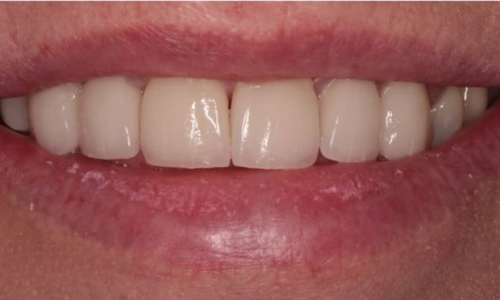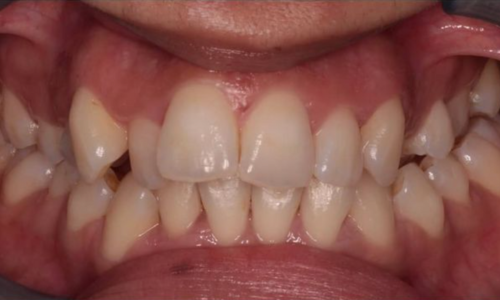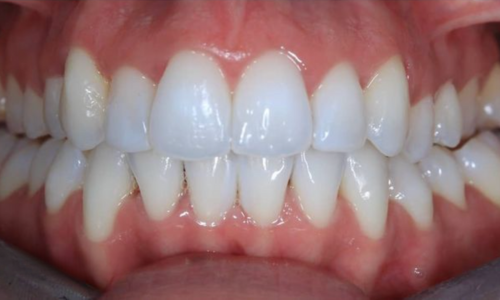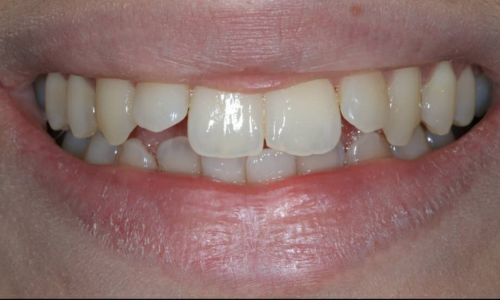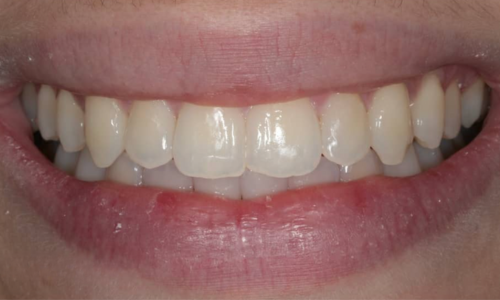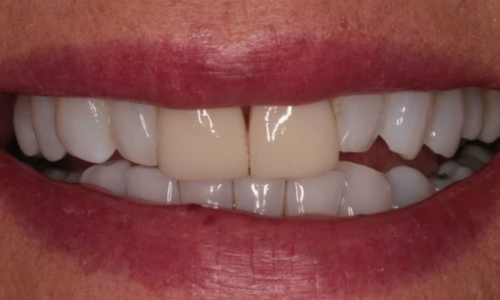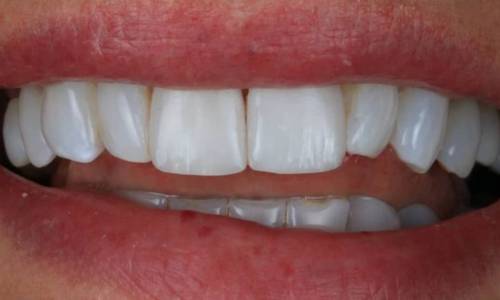Gap between teeth: causes, treatments and how to fix it safely
A gap between teeth — especially a gap between front teeth — is one of the most common cosmetic dental concerns we see at Lateral Dental Sheffield. For some people, a small gap can be a charming feature that adds character. For others, it may affect confidence, how they speak, or how their smile feels.
The good news is that closing gaps is usually straightforward and can be done in several different ways — including orthodontic treatment, bonding, or veneers.
This guide explains what causes gaps between teeth, what treatments are available, and how to choose the right one for your smile.
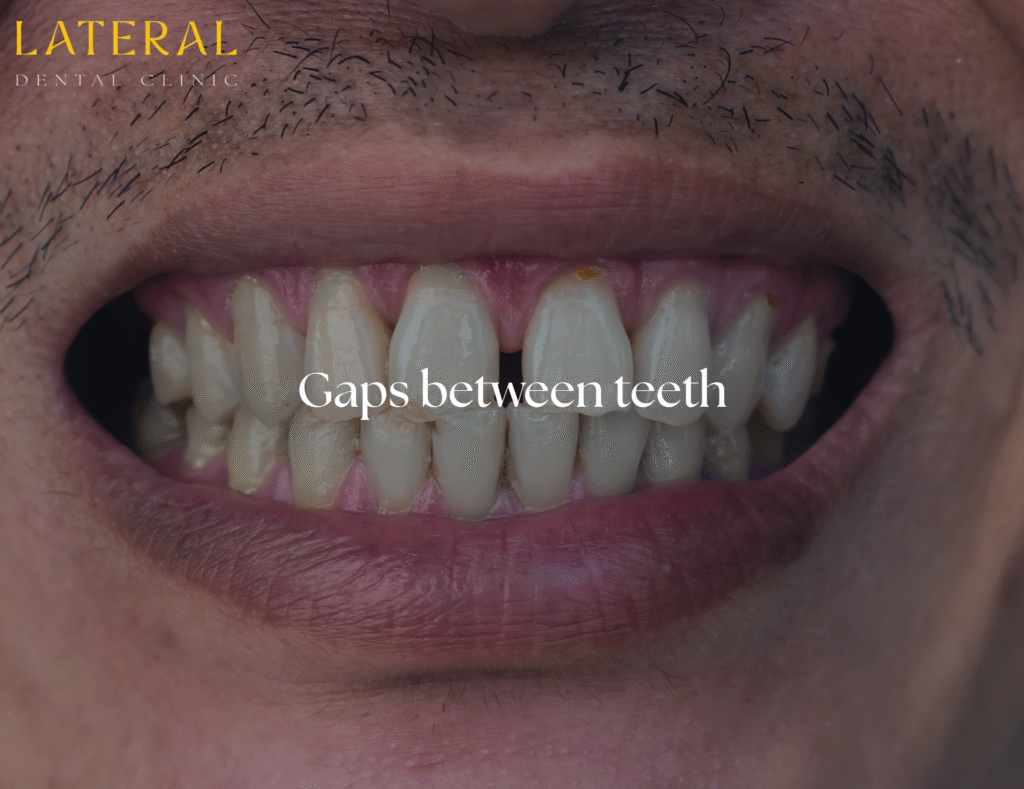
What causes a gap between teeth?
A gap between teeth (known in dentistry as a diastema) can develop for several reasons — sometimes it’s simply genetic, other times it’s due to habits or oral changes over time.
Here are the most common causes:
- Jaw and tooth size mismatch: If your jaw is relatively large compared with your teeth, natural spacing can occur.
- Frenum attachment: The small tissue connecting your upper lip to your gums (the labial frenum) can sometimes sit too low, creating a visible gap between front teeth.
- Tooth loss or shifting: Missing teeth can cause neighbouring teeth to drift and open spaces.
- Habits: Thumb sucking or tongue thrusting can push teeth forward.
- Gum disease: When bone support is lost, teeth can spread apart gradually.
Your dentist will always check the cause before recommending treatment — because fixing a gap effectively means treating the reason behind it.
Is a gap between front teeth a problem?
Not always. A small gap between front teeth is perfectly normal and doesn’t necessarily need treatment unless it’s causing concern, discomfort, or speech issues.
However, if gaps are the result of tooth movement, gum disease, or missing teeth, they can affect bite balance and lead to further spacing over time.
Many people also find that closing gaps improves how their smile looks and how confident they feel.
At Lateral Dental, we’ll always explain whether your gap is purely cosmetic or if there’s an underlying issue that needs attention first.
Ways to close a gap between teeth
There are several safe, modern ways to reduce or close gaps — and your dentist will recommend the most suitable approach after assessing your teeth, gums, and bite.
| Feature | Invisalign aligners | Composite bonding | Porcelain veneers |
|---|---|---|---|
| Best for | Closing spacing and improving overall alignment. | Small, localised gaps; quick cosmetic blend. | Closing gaps while changing shape/colour/symmetry. |
| How it works | Series of clear trays move teeth together gradually. | Tooth-coloured resin added and sculpted to close spaces. | Thin custom shells bonded to fronts of teeth. |
| Typical timeframe | ~3–12 months (case dependent). | Same day (single visit in many cases). | ~2–3 weeks (prep + fit). |
| Pros | Moves teeth to ideal positions; no drilling; discreet and removable. | Fast, minimally invasive, cost-effective for small gaps. | Instant, precise aesthetics; colour and shape control. |
| Considerations | Needs 20–22 hrs/day wear; retainers after treatment. | May stain/wear; periodic polishing or refresh needed. | Tooth preparation often required; higher fee; replacement over time. |
| Durability | Long-term with retainers and good care. | Typically 3–7+ years depending on habits and care. | Often 10–15+ years with good care. |
| Reversible? | Yes (tooth structure unchanged). | Yes (additive; can be removed/renewed). | No (irreversible if tooth reduction needed). |
| Aftercare | Night-time retainers to maintain space closure. | Good hygiene; avoid biting hard objects; occasional polish. | Hygiene and reviews; avoid excessive forces; guard if you grind. |
Using Invisalign to close a gap between teeth
One of the most popular options today is Invisalign, a clear, discreet aligner system that gradually moves your teeth into the right position.
At Lateral Dental Sheffield, we’re certified Invisalign providers and have helped many patients close gaps comfortably and predictably.
How Invisalign works for gaps
Invisalign aligners apply gentle, continuous pressure to your teeth. Every one to two weeks, you switch to the next aligner in the series, which continues the movement until your gap closes.
Because Invisalign is clear and removable, it’s an excellent option for adults who want to fix a gap between front teeth without visible metal braces.
How long does it take?
Most mild to moderate spacing cases close within 3 to 9 months, but your dentist will confirm an accurate timeframe after your 3D scan and digital simulation.
You can also read our detailed guide — Invisalign explained by a Sheffield dentist — for a step-by-step breakdown of how treatment works and what to expect.
Composite bonding for small gaps
If your gap is minor, composite bonding can offer a fast, minimally invasive solution. Your dentist applies a tooth-coloured resin that’s sculpted and polished to blend perfectly with your natural teeth.
This method is ideal if you want instant results without orthodontic movement. It can also be combined with whitening or Invisalign for a more complete smile refresh.
Veneers for aesthetic gaps
For patients who want to change tooth shape, colour, or symmetry as well as closing spaces, veneers are another excellent option.
Porcelain veneers are thin, custom-made shells that fit over the front of your teeth to improve appearance. They can hide small gaps while giving a uniform, bright look.
Your dentist will always discuss whether veneers are the best choice or if Invisalign or bonding would achieve a more natural result.
Can a gap reopen after treatment?
It’s rare, but gaps can sometimes reappear if teeth move slightly after orthodontic treatment. That’s why retainers are so important.
After Invisalign, you’ll wear retainers to keep your teeth in their new position. They’re usually worn at night and are comfortable, clear, and easy to maintain.
We’ll provide custom retainers and show you how to look after them to protect your investment long-term.
Why patients trust Lateral Dental
- Our clinicians perform Invisalign treatments and smile makeovers every week — from small spacing cases to complete realignments.
- We combine digital 3D scans, tooth movement simulations, and minimally invasive cosmetic options to plan every case precisely.
- As a trusted Invisalign provider in Sheffield, we use proven, evidence-based systems that align with the official Invisalign UK standards.
- You’ll always receive honest advice and written treatment plans — no pressure, no hidden extras, and full transparency.
You can read more about how we approach patient care on our contact page.
How to care for your smile after closing a gap
Once your gap has been corrected, maintaining the results is straightforward:
- Wear retainers as recommended.
- Brush twice daily with fluoride toothpaste.
- Clean between teeth using floss or interdental brushes.
- See your dentist regularly for check-ups and hygiene appointments.
- Avoid habits like nail biting or using teeth to open packaging.
At Lateral Dental, we can also polish minor edge chips or uneven enamel to refine your smile after treatment.
When should you see a dentist about a gap between teeth?
It’s worth booking a consultation if:
- The gap is getting wider.
- You feel self-conscious about smiling.
- You notice food getting trapped or speech changes.
- You’ve lost a tooth and others are shifting.
Early treatment makes closing gaps easier and more predictable — and can prevent the need for more complex work later.
Book your consultation today through our contact page.
In conclusion
A gap between teeth doesn’t have to affect how you feel about your smile. Whether it’s a small gap between front teeth or wider spaces throughout your mouth, modern treatments make it simple to correct gently and predictably.
At Lateral Dental in Sheffield, we can show you exactly how your smile could look after Invisalign, bonding, or veneers — and guide you through every step.
If you’re ready to close the gap and feel more confident, book your consultation today via our contact page.
Questions our patients ask about gaps between teeth
It’s often due to genetics, a tight frenum (the tissue under your upper lip), or minor spacing between teeth. Your dentist can identify the cause easily during an exam.
Yes, Invisalign can effectively move teeth closer together over a few months. It’s ideal for mild to moderate gaps and offers a clear, comfortable alternative to braces.
Not if you wear your retainers as advised. They keep your teeth in their new position after Invisalign or braces.
Yes, composite bonding and porcelain veneers can both close small to medium gaps for an instant result, especially at the front teeth.
Absolutely. If it’s not causing any functional issues or self-consciousness, leaving it alone is perfectly fine. Your dentist will guide you if treatment is ever needed.













